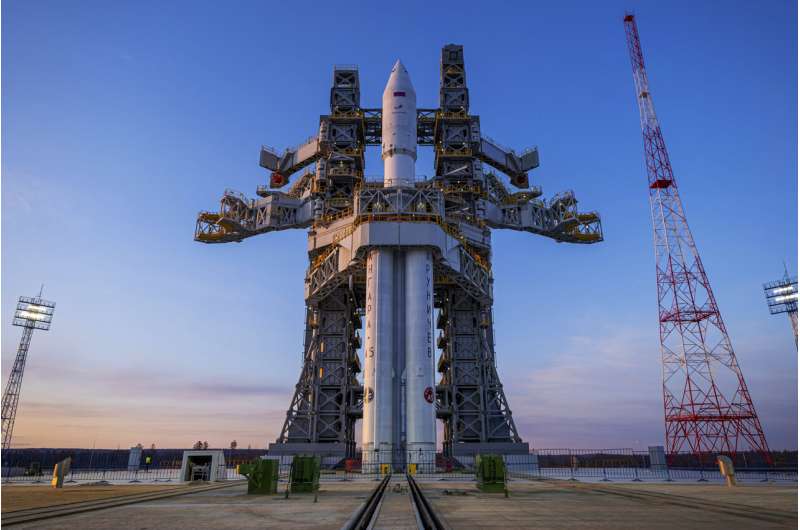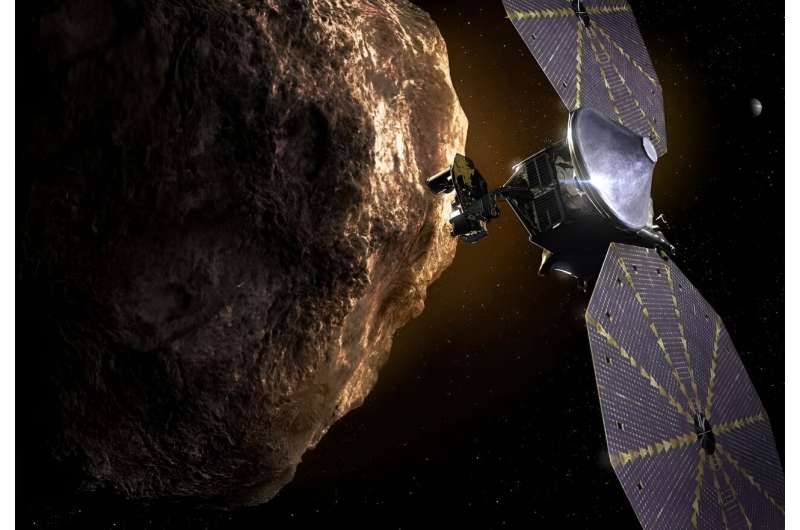Astrobotic and Mission Control to partner on lunar rover mission
Tuesday, 09 April 2024 21:39

NRO eyes diverse satellite fleet and AI-powered ground systems in modernization push
Tuesday, 09 April 2024 20:43

Russia aborts planned test launch of new heavy-lift space rocket
Tuesday, 09 April 2024 19:35
What could we build with lunar regolith?
Tuesday, 09 April 2024 17:58
It has often been likened to talcum powder. The ultra fine lunar surface material known as the regolith is crushed volcanic rock. For visitors to the surface of the moon it can be a health hazard, causing wear and tear on astronauts and their equipment, but it has potential. The fine material may be suitable for building roads, landing pads and shelters. Researchers are now working to analyze its suitability for a number of different applications.
Back in the summer of 1969, Armstrong and Aldrin became the first visitors from Earth to set foot on the moon. Now, 55 years on and their footprints are still there.
U.S. Space Command adopts multipronged approach to prepare for ‘a conflict that has never happened’
Tuesday, 09 April 2024 16:51

If we want to visit more asteroids, we need to let the spacecraft think for themselves
Tuesday, 09 April 2024 16:02
Missions to asteroids have been on a tear recently. Visits by Rosetta, Osirix-REX, and Hayabusa2 have all visited small bodies and, in some cases, successfully returned samples to the Earth. But as humanity starts reaching out to asteroids, it will run into a significant technical problem—bandwidth.
There are tens of thousands of asteroids in our vicinity, some of which could potentially be dangerous. If we launched a mission to collect necessary data about each of them, our interplanetary communication and control infrastructure would be quickly overwhelmed. So why not let our robotic ambassadors do it for themselves—that's the idea behind a new paper published in the Journal of Guidance, Control, and Dynamics and available on the arXiv preprint server from researchers at the Federal University of São Paulo and Brazil's National Institute for Space Research.
The paper primarily focuses on the control problem of what to do when a spacecraft is approaching a new asteroid.
SpaceWERX initiative lends startups a crucial hand in tech validation
Tuesday, 09 April 2024 14:53

Delta eclipse flight: Here's what it was like
Tuesday, 09 April 2024 13:20
At 35,000 feet over the U.S. the air was thick with anticipation and excited chatter as everyone pulled out their phones hoping to get a photo.
Gray shadows entered the blue sky, turning it a rich slate as the moon started to eclipse the sun.
The moment everyone had been waiting for was here—totality.
Before even getting into the air Delta Air Lines treated passengers to an experience. As they arrived at gate E15 at Dallas Fort Worth International Airport for Flight 1010 to Detroit, they were met with a celestial-themed balloon arch, a red carpet and music.
Flight attendants in purple and gray passed out eclipse-viewing glasses the airline produced in collaboration with Warby Parker—paper shades but with blue-and-white star path drawings on the front and "Eyes on the Sky" written inside.
Delta workers wore T-shirts emblazoned with "Climbing the Cosmos," the airline's slogan for the pair of flights from Austin and Dallas that would be in the path of the eclipse 35,000 feet in the air.
People were excited, and the gate party only heightened the anticipation. Most passengers flew to Dallas that morning or the night before just to turn right around, all to experience totality in a way few others could.
Moon's early volcanic activity reshaped by internal movements
Tuesday, 09 April 2024 11:50 Approximately 4.5 billion years ago, a collision between a small planet and the young Earth dispersed molten debris into space, which eventually coalesced to form the moon. This widely accepted theory of lunar formation provides a backdrop to recent discoveries by the University of Arizona Lunar and Planetary Laboratory, as detailed in a new study in Nature Geoscience. The research underscores s
Approximately 4.5 billion years ago, a collision between a small planet and the young Earth dispersed molten debris into space, which eventually coalesced to form the moon. This widely accepted theory of lunar formation provides a backdrop to recent discoveries by the University of Arizona Lunar and Planetary Laboratory, as detailed in a new study in Nature Geoscience. The research underscores s Joint mission by Astrobotic and Mission Control showcases lunar rover tech aboard Griffin-1
Tuesday, 09 April 2024 11:50 Astrobotic and Mission Control have embarked on a collaborative lunar rover demonstration mission. The mission features Astrobotic's CubeRover, designed for traversing multiple kilometers on planetary surfaces, integrated with Mission Control's Spacefarer operations platform. This integrated system will operate aboard Astrobotic's inaugural Griffin lander mission targeting the lunar south pole.
Astrobotic and Mission Control have embarked on a collaborative lunar rover demonstration mission. The mission features Astrobotic's CubeRover, designed for traversing multiple kilometers on planetary surfaces, integrated with Mission Control's Spacefarer operations platform. This integrated system will operate aboard Astrobotic's inaugural Griffin lander mission targeting the lunar south pole. 










